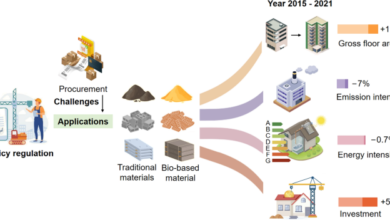Reducing Compliance Risks with Mortgage Automation Platforms

In the highly regulated mortgage industry, maintaining compliance with constantly evolving legal and regulatory requirements is a major challenge for lenders. Non-compliance can lead to costly penalties, reputational damage, and operational inefficiencies. To address these challenges, mortgage automation platforms have emerged as essential tools that help streamline compliance processes, reduce risks, and ensure adherence to both federal and state regulations. By automating key tasks, these platforms minimize human errors, increase accuracy, and make regulatory compliance a seamless part of the mortgage workflow.
Mortgage automation platforms provide lenders with automated auditing tools that continuously monitor the entire mortgage process, from loan origination to closing. This ensures that every step adheres to regulatory guidelines, such as the Truth in Lending Act (TILA), Real Estate Settlement Procedures Act (RESPA), and the Equal Credit Opportunity Act (ECOA). Automated audits identify discrepancies and flag potential issues before they become compliance violations, reducing the need for time-consuming manual checks. Additionally, these platforms generate detailed reports on compliance performance, making it easier for lenders to demonstrate compliance during regulatory audits.
Real-Time Regulatory Updates
One of the major benefits of a mortgage automation platform is the ability to keep lenders updated with the latest changes in regulations. Since mortgage regulations frequently change, staying informed can be difficult and labor-intensive. Automation platforms are often integrated with regulatory databases, ensuring that they are always up-to-date with the latest compliance requirements. When new laws or regulations are enacted, the platform can automatically adjust processes, workflows, and documentation templates to align with the new rules. This helps lenders stay compliant without needing to constantly monitor for updates manually.
Streamlined Document Management
Managing mortgage-related documents is a critical aspect of compliance. From loan applications to closing disclosures, each document must meet specific regulatory standards regarding formatting, timing, and content. Mortgage automation platforms simplify document management by digitizing the process and ensuring that the correct documentation is created, signed, and stored at each stage of the loan process. Automation ensures that required documents are properly generated and that they meet compliance standards, reducing the risk of errors that could lead to non-compliance.
Moreover, these platforms often come with automated document tracking systems that ensure deadlines are met for document submission and signatures. For example, if a borrower needs to sign a disclosure within a specific timeframe, the system will issue reminders and notifications to ensure compliance with timing regulations.
Consistent Underwriting and Risk Assessment
Mortgage underwriting is another area where compliance is critical. The underwriting process involves evaluating a borrower’s financial status, credit history, and ability to repay the loan—all of which are governed by stringent regulatory requirements. Mortgage automation platforms ensure that the underwriting process is consistent and in line with compliance standards. They use predefined rules and algorithms to evaluate loan applications based on criteria like income, debt-to-income ratio, and creditworthiness, which reduces the likelihood of non-compliant loans being approved.
In addition to ensuring consistency, automation platforms improve transparency by providing a clear audit trail of all underwriting decisions. This traceability is essential for demonstrating compliance to regulators and provides a defense in the case of disputes.
Data Security and Privacy Compliance
Mortgage automation platforms also play a critical role in ensuring that sensitive customer data is handled in compliance with privacy laws, such as the General Data Protection Regulation (GDPR) and the California Consumer Privacy Act (CCPA). These platforms implement robust encryption, access controls, and data storage protocols to protect borrowers’ personal information. Automation ensures that data access is limited to authorized personnel, reducing the risk of data breaches, which could result in significant fines and reputational damage for lenders.
Additionally, automated systems can track and document all access to sensitive information, ensuring that any unauthorized access is quickly identified and addressed. This provides an extra layer of security and compliance that is harder to achieve with manual processes.
Cost Savings and Efficiency
By automating compliance processes, mortgage lenders can significantly reduce the costs associated with manual compliance checks, paperwork, and audits. Mortgage automation platforms allow lenders to reallocate resources toward more strategic initiatives, rather than spending excessive time and money on regulatory compliance. The efficiency gained through automation also improves turnaround times for loan approvals and closings, creating a more streamlined and cost-effective process for both lenders and borrowers.
The Future of Compliance Automation
As regulations become more complex and the volume of loans increases, the role of mortgage automation platforms in compliance will continue to grow. Emerging technologies such as artificial intelligence (AI) and machine learning are expected to further enhance the ability of these platforms to detect potential compliance issues and recommend proactive solutions. AI-powered systems can analyze historical data, identify patterns in regulatory violations, and predict future compliance risks, allowing lenders to act preemptively.
In addition, as the mortgage industry moves toward end-to-end digital solutions, automation platforms will play an even greater role in ensuring that every aspect of the mortgage process—from application to closing—remains compliant with all relevant regulations.
Summing Up
In conclusion, mortgage automation platforms offer a comprehensive solution to the compliance challenges faced by lenders in today’s complex regulatory environment. By automating tasks such as auditing, document management, underwriting, and real-time updates, these platforms ensure that lenders remain compliant while reducing the risk of costly errors and penalties. Beyond the immediate benefits of reducing compliance risks, automation also brings efficiency, cost savings, and improved accuracy to the mortgage process.
As technology continues to advance, the role of automation in compliance will become even more integral to the future of the mortgage industry, allowing lenders to navigate an ever-evolving regulatory landscape with confidence and ease. Furthermore, with the growing integration of artificial intelligence and machine learning, the ability to predict and prevent compliance issues will continue to improve, positioning lenders to not only meet regulatory demands but to anticipate future challenges and adjust proactively. This continued evolution of mortgage automation will create a more resilient, agile, and compliant mortgage ecosystem.





